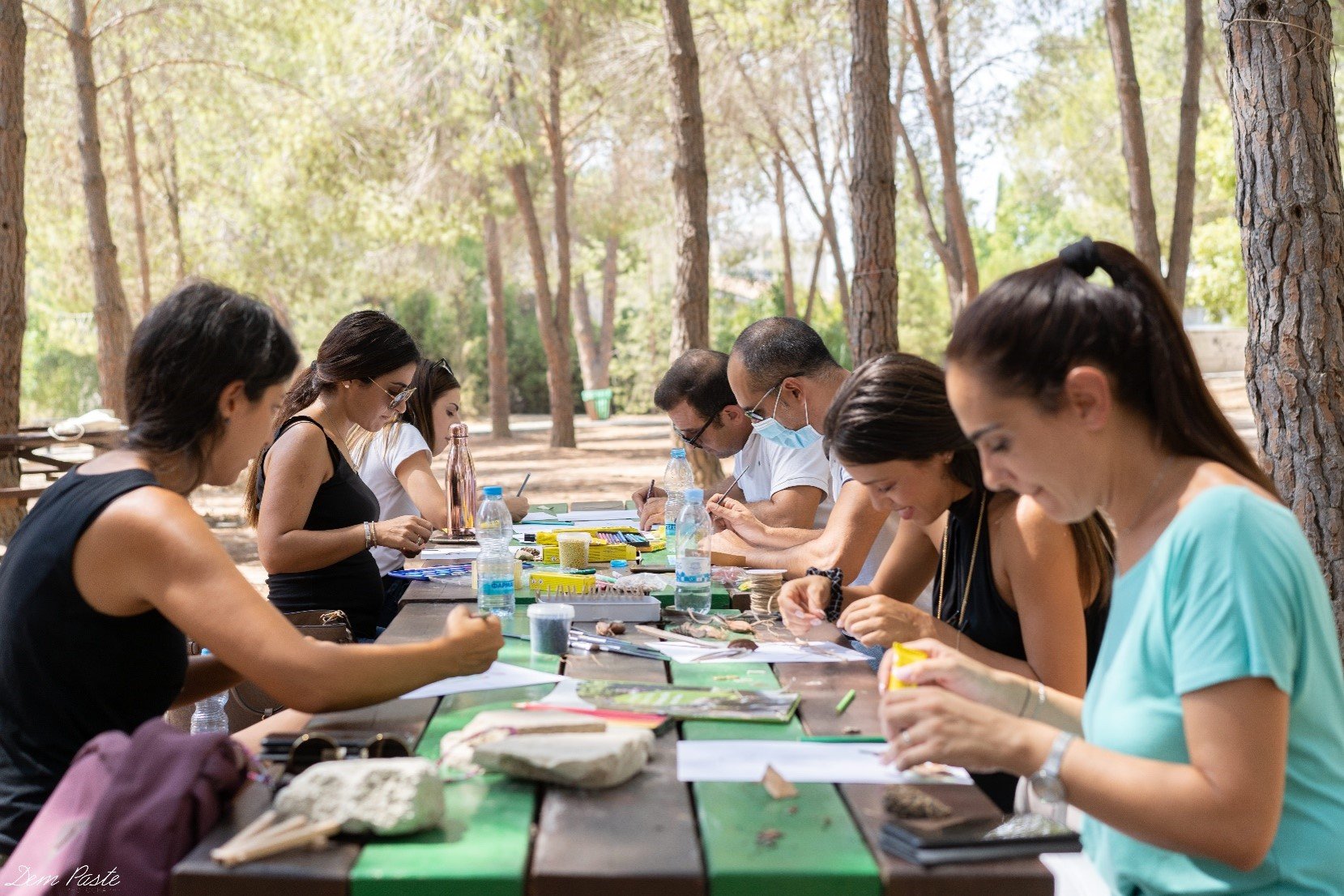
The Sarajevo Pathway
Overview
The Sarajevo Pathway is a co-creative, arts-based engagement process that has been developed within the Connecting Nature project (2017-2022). Its name reflects its co-creative character as it was piloted and tested in Sarajevo in March 2020. It was then taken to Nicosia where it went through a similar co-creative process and was delivered in September 2020. The nature of co-creation has meant that each time, it was developed in collaboration with the cities, to suit the needs, and engage with the nature of each city.
The Sarajevo process uses a number of methods, derived from the expertise of our core team. The process is designed to establish, or re-establish connections with nature within cities. The process invites creative encounters with the past, present and future, providing space for imaginative and innovative story-telling by the participants themselves.
Methodological Approaches
Stories help us to communicate and share experiences. They connect us – to our families, our communities, and to the places in which we live. With and in them, stories provide us the means to create meaning; with language, symbol, pace, rhythm, we create a foundation for telling and showing the world what is important to us, what matters. Stories give shape to living; they draw on our memories, capture our present, and give us means to imagine our future.
The past, the present and the future provide us with the frame or lens through which we can better explore our relationship with nature; in this way, they have become the anchors of our methodology – asking the following questions:
What has brought you here?
Where is here/what does ‘here’ mean?
Where are you going/how do you get there?
To answer these questions, our methodological process is composed of the following elements:
Memory Work is a social constructionist and feminist research method that was developed to bridge the gap between theory and experience; it is a group method involving the collective analysis of individual memories. Memory is something that “lives within our bodies; our memories are our bodies and our bodies are our memories. Memory is all that we are” (Swinson, 2014). This is echoed by Juhani Pallasma, who notes that ‘human memory is embodied, skeletal and muscular in its essence, not merely cerebral’.
Immersion in Nature and Embodied Reflection: provide a way of understanding the body as a filter between nature and us. The body's senses have the power to establish relationships with our surroundings, as well as trigger memory. The conscious reflection on these experiences can reveal well-known spaces in new light, while creating bonds with people who share the experience with us.
Body Mapping: a process for capturing individuals’ lived experiences and stories, it originated in South Africa to counteract the stigma and fear by recognizing personal stories of living with HIV. According to Brett-MacLean (2009), body mapping offers both a metaphor and means of recognizing the fluid tracings of the personal, social, geographical, political and emotional experience.
Piloting the Sarajevo Pathway
March 2020 - Sarajevo (Bosnia and Herzegovina): The Sarajevo Pathway derives its name from Sarajevo, the first city in the full methodological process was piloted.
"Reflecting on the outputs from the pilot testing of the method in Sarajevo in March 2020, the idea of 'circularity' continues to persist as a driver for framing the intangible elements that are at the foundation of the tangible aspects of their exemplar (i.e. their focus on sensory gardens, and fostering intergenerational exchange seems to be bringing this idea of a circle (on two fronts) center stage - the metaphorical circle as a garden - from seed, to plant, to seed again; and then the circle of exchange between and among generations.
September 2020 - Nicosia (Cyprus): The piloting in Nicosia was undertaken over 3 days and introduced an artist to support the facilitation of creative outputs.
“Through the Sarajevo process, the participants had the opportunity to work in a very different manner. Art and nature helped the team to unlock a new perspective, utilize personal experiences and memories, approach the project and express in a very fruitful way, thus contributing to the overall team’s tasks. After the three days session, Nicosia’s team saw Nicosia’s Exemplar in a very different perspective.” – Nicosia’s Connecting Nature report
June - November 2021, A Coruna (Spain): The Sarajevo Pathway was designed and delivered as two separate, but interconnected, activities. Across both sessions, the participants were supported by two artists – a poet and an illustrator – who were invited to make a creative response, adding another layer to the creative element that is key to the EM|Path approach.
“The goal…was to highlight and reinforce the importance of heritage, feelings, and memories in connection to and with nature, for our exemplar (urban gardens). Furthermore, the approach has allowed us to reflect collectively on how these feelings can increase attachment towards public space and engage citizens in the co-designing of nature-based solutions.” - Antonio Pietro, A Coruna City Council







